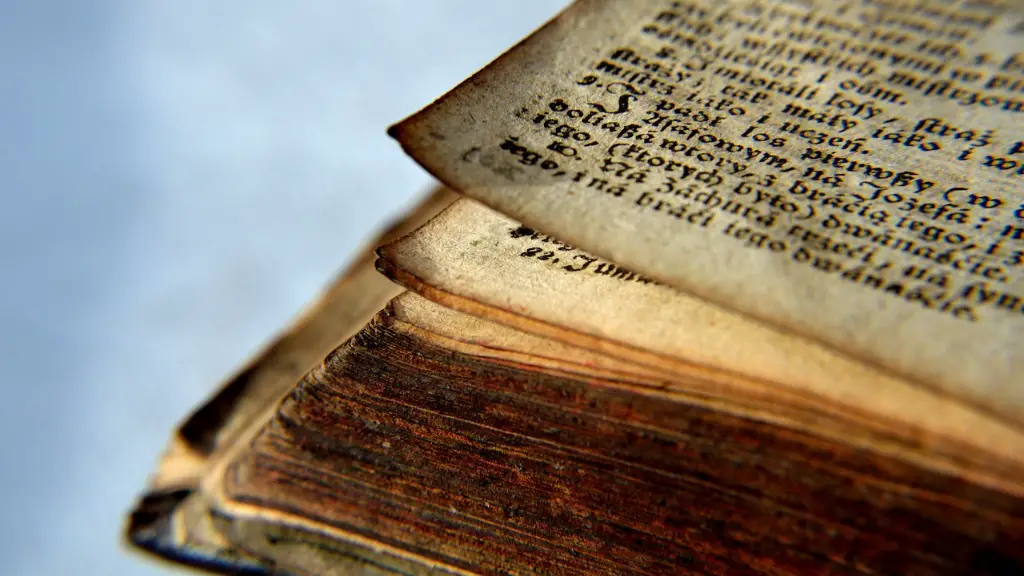Naaman was a general in the army of the king of Syria. He was a brave and successful military leader, but he had leprosy. When he was told by a servant girl from Israel that there was a prophet in her country who could heal him, he went to see Elisha. Elisha sent a messenger to tell Naaman to wash in the Jordan River seven times and he would be healed. Naaman was angry at first, but he did as he was told and was healed of his leprosy.
Naaman is a commander of the Syrian army who is stricken with leprosy. He is cured of his leprosy by the prophet Elisha and goes on to serve God.
What do we learn from the story of Naaman?
Sometimes, we forget how much of an impact we can have on others simply by lending a helping hand. Just like Naaman, the act of kindness shown to him changed his life forever and led him to a new understanding and respect for God. Whenever we have the opportunity to help someone, we should always remember that it could very well change their life for the better.
He was an honorable, valiant man but the scripture tells us he was a leper in need of healing. Leprosy according to Wikipedia is, “primarily a granulomatous disease of the peripheral nerves and mucosa of the upper respiratory tract; skin lesions are the primary external sign.”
What does the Bible say about Naaman
Naaman was a great and respected man, but he had leprosy. Despite this, he was still a valiant soldier and had been responsible for many of Aram’s victories. However, when he was told by a prophet that he could be healed of his leprosy by bathing in the river Jordan, he was initially skeptical. But he did as he was told, and was healed.
Gehazi’s disobedience led to him being cursed with leprosy. This leprosy was so severe that it caused him to turn completely white.
Why did Elisha refuse the gift from Naaman?
This is a story about the power of faith and how even the simplest act can be a miracle if done with enough belief. Naaman was a great man, a military leader, and yet he was struck with a terrible disease. When he was told to go and see Elisha, he did so with great hope, and Elisha simply had him bathe in the river seven times. It was a humble request, but Naaman did as he was told and was cured. As a reward, he offered Elisha many gifts, which the latter refused. Elisha explained that the cure had come only from Heaven, and that it was not anything he had done. This story is a reminder that faith can move mountains, and that even the simplest act can be a miracle if done with enough belief.
The act of tearing one’s garments is often associated with grief or mourning. In the case of Elisha, he expresses his grief at the separation of the king of Israel. This act would have been seen as a sign of respect and mourning by the people around him.
What can we learn from Naaman’s servant girl?
It is always difficult to do the right thing, especially when it goes against our own personal beliefs or interests. However, it takes a lot of courage to stand up for what is right, even in the face of adversity. Naaman’s servant girl showed great courage when she recommended that her master go and see the prophet Elisha, even though he was an enemy of Israel. By doing so, she allowed God to work in Naaman’s life and change his heart. As a result, the entire nation of Syria was affected by Naaman’s newfound faith in God.
Naaman came to Elisha’s home with his servants, horses, and chariots. Elisha sent his servant to give Naaman the Lord’s instructions. The Lord would heal Naaman if he washed himself in the Jordan River seven times. Naaman was skeptical but decided to follow the instructions. To his amazement, he was healed! This story teaches us that we should always follow God’s instructions, even if they don’t make sense to us at first.
What does the name Naaman mean
This is a Hebrew name that means “be pleasant.” It is derived from the verb “naem,” which means “to be pleasant,” as well as the noun for “pleasantness,” “na’aman.” Naaman was a captain of the Syrian army who was cured of his leprosy by Elisha in the Torah.
Leprosy was considered a very visible and physical representation of sinfulness and corruption. The way leprosy physically decayed and corrupted the body was seen as a metaphor for how sin could spiritually decay and corrupt someone. Sin was seen as something that could ruin someone spiritually, just like leprosy could ruin someone physically.
What was Naaman afflicted with?
Leprosy is a terrible, incurable disease that afflicts many people around the world. Naaman, a prominent figure in his community, was struck with the disease and his wife’s servant girl suggested that they consult with the prophet of God. The prophet was able to heal Naaman and he was free from the disease. This story is a reminder of the power of God and the importance of following His will.
If you put your trust in God, you won’t need to rely on your own understanding. You can let God take the lead, and trust that He knows what’s best for you. This doesn’t mean that you won’t ever face challenges, but it does mean that you can be confident that God will see you through them.
How did Jesus deal with leprosy
This story is from the Bible, in the book of Mark, chapter 1. It is a story of Jesus healing a man with leprosy. Leprosy was a terrible disease in those days, and people who had it were considered to be unclean. They were often shunned by others and lived in isolation. But Jesus reached out and touched this man, healed him, and told him to be clean. This story shows the power of Jesus to heal, and also his compassion for those who are suffering.
Leprosy was considered as God’s punishment for sinful behaviour in Hebrew Bible. It was associated with death and people perceived it as a living death.
What was the value of Naamans gifts?
Naaman thought that he could buy his healing from the prophet Elisha. He brought with him a great deal of wealth, including 10 talents of silver and 6,000 shekels of gold. However, Elisha did not want Naaman’s money. He only wanted him to wash in the Jordan River in order to be healed. This shows that healing cannot be bought, but must be earned through faith and obedience.
Many Christians see Naaman’s baptism as a prefiguration of their own baptisms. By being immersed seven times in the waters of the Jordan, Naaman is cleansed of his leprosy and his skin is restored. This is seen as a symbol of the cleansing power of baptism and the way it can renew and refresh us.
Warp Up
Naaman was a commander of the army of the king of Syria. He was a very successful military leader, but he had leprosy. So, he went to see the prophet Elisha in Israel, hoping to be cured. Elisha told him to wash seven times in the Jordan River, and he would be healed. Naaman did as he was told, and he was healed!
Naaman was a wealthy and powerful military leader in ancient Israel. However, he was also a leper. In the Bible story, Naaman is cured of his leprosy by the prophet Elisha. This story teaches us that even the most powerful and influential people can be helped by God.





